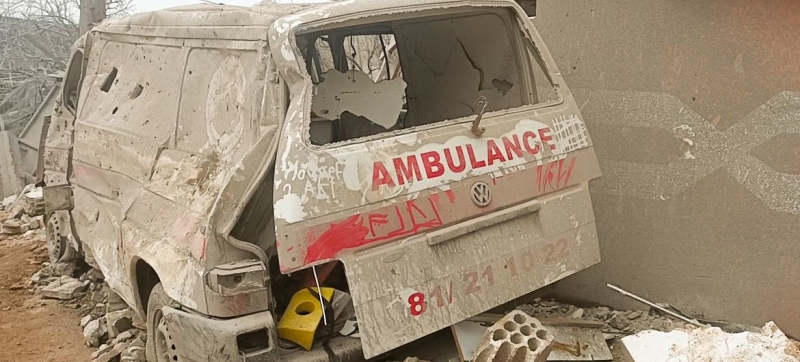
The strikes on the village of Hebbaria in southern Lebanon come amid escalating gunfire on both sides of the Blue Line dividing Israel and Lebanon. Middle East Crisis: Violence Spikes in Gaza, Israel, Lebanon Peace and Security
Hezbollah strikes on Israel, Israeli retaliatory strikes on targets in southern Lebanon, and violence in Gaza – tensions are rising in the Middle East, and with them the risk of further regional escalation. Amid this escalation, the highest-ranking UN official in Lebanon, Jeanine Hennis-Plasschaert, has arrived in Israel.
She is meeting with Israeli government officials in an attempt to prevent further escalation. The main message: there is “no military solution to the problem that would ensure the security of both sides.”
Skirmishes between Hezbollah and Israel
Residents of southern Lebanon reportedly received messages from the Israeli military on social media and by phone on Monday, warning them to stay away from any buildings or villages associated with the militant group Hezbollah.
The militant group fired about 150 shells at northern Israel over the weekend. Hezbollah has been shelling Israel since the start of the war in Gaza, and the attacks have forced some 60,000 Israelis to flee their homes. In southern Lebanon, 30,000 people were forced to seek safety.
Humanitarian Crisis
New attacks on a camp for internally displaced persons near Nuseirat have been reported in Gaza. According to the UN agency for Palestine refugees (UNRWA), military operations in the enclave have intensified.
The weather is making the civilians’ plight worse: Heavy rains and high tides have flooded makeshift shelters along the shoreline where people had been living after receiving evacuation orders from the Israeli military. Following the Hamas-led terrorist attacks on Israel on October 7 and the subsequent Israeli military action in Gaza, 1.9 million residents of the enclave, 90 percent of its population, have been forced to flee their homes.
Due to the flooding, local authorities have called on people living in low-lying areas to leave and seek other places. The UN and its partners reported that they have not been given safe access to those in need to deliver materials to build makeshift shelters or repair tents. Anyone in Gaza can come under fire at any moment, and people face a serious risk of contracting a dangerous infection – the enclave has no sewage system and no drainage for incoming rainwater.
UNRWA notes that it has begun a fight against reptiles, rodents and insects that can spread diseases.
Power outages
Lack of clean water remains a serious problem in northern Gaza. Water, sanitation and hygiene facilities are running on generators that require fuel, which is in short supply, the UN Office for the Coordination of Relief (OCHA) said.
“OCHA’s humanitarian partners say it remains extremely difficult to deliver fuel to the north, with deliveries often delayed or rejected by Israeli authorities at checkpoints,” the report said.
The water crisis in Gaza is exacerbated by damage to water infrastructure, which is extremely difficult to repair due to the war and a shortage of materials. In these conditions, the UN Children’s Fund (UNICEF) provides almost 900,000 people with water – 15 liters of water per person per day in the enclave. Since October last year, UNICEF has distributed 4.75 million liters of bottled water.
The UN agency has also provided local authorities with more than 3.4 million liters of fuel and more than 40 cubic meters of chemicals for water treatment.
Four mobile water treatment plants in Khan Younis and Rafah are also operating with UNICEF support, each of which can produce five cubic meters of water per hour.
